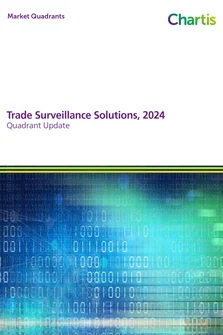<p>The market for energy trading risk is highly diverse, which can make it difficult to sum up the market as a whole. The sub-sections of the energy market include electricity markets, coal (which is tightly linked to logistics), oil (which is the most geographically integrated market, but is divided by different production grades), gas (which is a networked market that often has linkages to oil indices), petrochemicals and refining, retail markets, industrial wholesale markets, and logistics.</p>
<p>As well as the complexity of the market structure, there are also a wide range of players in the energy markets. Actors as varied as regulated utilities, brokers, hedge funds, banks, and industrial users have differing needs of considerable diversity. For each of these actors, the concept of “energy trading risk management” may mean something quite different and will have different business and technology requirements.</p>
<p>However, while the market is diverse and split into subgroups, there are a number of key trends that are affecting the market as a whole. Traditionally, the models and frameworks for energy trading risk management have been based on those in financial markets. However, the needs of the energy trading risk markets are different, and risk management strategies and technologies need to evolve to meet the changing needs and increased complexity of energy markets, while responding to particular trades within those markets.</p>
<p>The development of the market for energy trading risk management has centered on its increased complexity and the demand for more integrated risk management. While energy trading risk management has previously focused on straightforward VaR analysis and hedge accounting, credit risk, which is complex and computationally intensive, is becoming more prominent. Operational risk (in this sense, the risk associated with managerial decision-making, operational flexibility, and daily operations of physical plants) also needs to be incorporated into risk measurements and risk needs to be incorporated into the decision-making process. These trends have been influenced and strengthened by changes in the markets.</p>
<p>In addition to the effects of energy-specific regulations, new rules and reporting requirements from the FSA and CFTC on reporting and clearing will also affect the marketplace. Financial regulation that aims to increase the transparency of the derivatives markets will be a key driver for energy trading risk management.</p>
<p>The complexity of the market means that there are a number of different approaches towards energy trading risk management and a number of different technology solutions available. Valuation, pricing, and risk management in an energy context require robust and flexible technology solutions and require a range of functionalities.</p>
<p>This report covers the technology requirements and the vendor landscape for energy trading risk management. The report focuses on integrated energy trading risk management platforms, rather than component tools. The analysis covers the completeness, convergence to market requirements, and relative strengths of end-to-end solutions. No single product or vendor’s family of products has comprehensive coverage and different vendors emphasize different capabilities. It can therefore be difficult for buyers to determine which solution or solutions meet their needs.</p>
<p>This report aims to help buyers decide using Chartis’s RiskTech Quadrant™ to help to throw light on the market. The RiskTech Quadrant™ uses a comprehensive methodology of in-depth independent research and a clear scoring system to help explain which technology solutions meet the needs of various financial institutions. The RiskTech Quadrant™ does not simply describe one technology solution as the best energy trading risk management solution; it has a sophisticated ranking methodology to explain which solutions would be best for buyers, depending on their implementation strategies and business needs.</p>
<p>This report covers the leading vendors offering energy trading risk management solutions, including Allegro, Brady Energy, OpenLink, Pioneer, SAS, SunGard, and Triple Point.</p>
Only users who have a paid subscription or are part of a corporate subscription are able to print or copy content.
To access these options, along with all other subscription benefits, please contact info@risk.net or view our subscription options here: http://subscriptions.risk.net/subscribe
You are currently unable to print this content. Please contact info@chartis-research.com to find out more.
You are currently unable to copy this content. Please contact info@chartis-research.com to find out more.
Copyright Infopro Digital Limited. All rights reserved.
As outlined in our terms and conditions, https://www.infopro-digital.com/terms-and-conditions/subscriptions/ (point 2.4), printing is limited to a single copy.
If you would like to purchase additional rights please email info@chartis-research.com
Copyright Infopro Digital Limited. All rights reserved.
You may share this content using our article tools. As outlined in our terms and conditions, https://www.infopro-digital.com/terms-and-conditions/subscriptions/ (clause 2.4), an Authorised User may only make one copy of the materials for their own personal use. You must also comply with the restrictions in clause 2.5.
If you would like to purchase additional rights please email info@chartis-research.com


